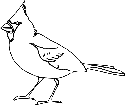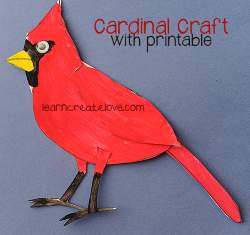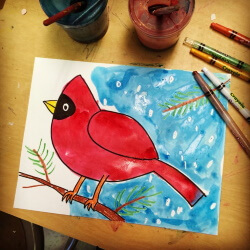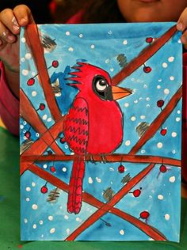The Northern Cardinal -- School-Age
The Northern Cardinal
The Northern Cardinal is the state bird of the most states (7 states): Illinois, Indiana, Kentucky, North Carolina, Ohio, Virginia and West Virginia.

Northern Cardinal Range Map
Habitat
Northern cardinals are non-migratory, they are year-round residents. They are active during the day, especially during the morning and evening. In winter, most cardinals flock and roost together. During the breeding season, they are quite territorial.
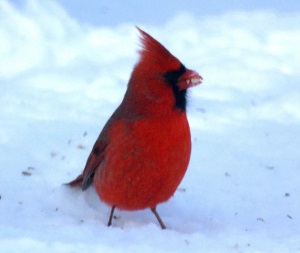
Northern cardinals live in several habitats including woodland edges, swamps, riverside thickets, city gardens and residential areas. They are often seen at backyard bird feeders.
Northern Cardinals
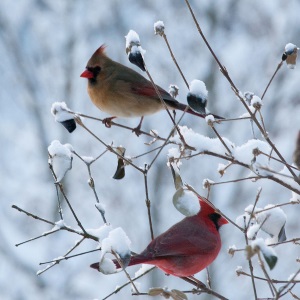
Northern cardinals are medium sized songbirds. Both males and females have bright orange beaks. They have long tails and a pointed crest of feathers on the top of their heads. Males are bright red, while females are light brown to gray with hints of red on their crest, wings, and tails.
Songbird
Cardinals are active songbirds and sing a variety of different melodies year-round. Both the male and female cardinal sing. Typically the male sings to attract mates or ward off intruders. The female typically sings to signal the male to bring food to the nestlings.
Video
Food
The Northern Cardinal's food consists of weeds, sunflower seeds, grains, and fruits. They have strong beaks to crack open seeds. They will also eat some insects. They feed their chicks almost exclusively insects. They are frequent visitors to backyard feeders.
Northern cardinals drink water by scooping it into their bill and tilting their head back. They drink water from steams, ponds and birdbaths.
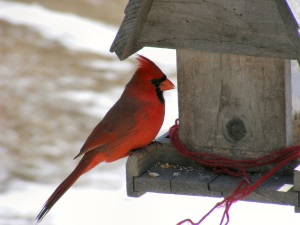
Nest
The female cardinal builds a cup-shaped nest in dense shrubbery, vines, or in small trees. The female Northern Cardinal builds its nest in dense shrubbery or in small trees. The nest are built several feet off the ground. The female builds the nest with twigs, strips of bark, leaves, grass, and roots. Items floating around such as paper the female will use it in her nest building. The female lines the nest with leaves, grass, or hair. Then she lays 3 to 4 white eggs with light brown spots. The female incubates the eggs while the male gathers food for both of them.

Recommended Book
Birds First Discovery Books
by Scholastic
Colorful pictures and information about the physical characteristics, habits, migration patterns, and markings of different species of birds. Includes transparent overlays.
Video
You May Like



